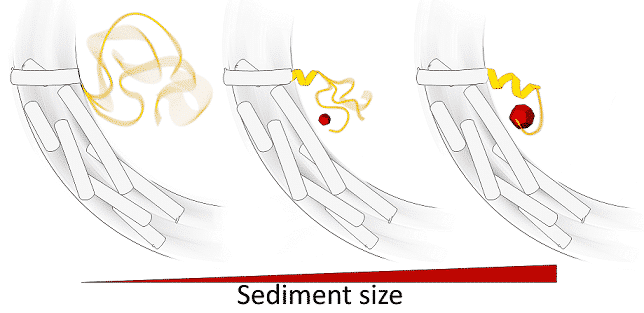
Folding of an intrinsically disordered iron-binding peptide in response to sedimentation revealed by Cryo-EM
e importance of intrinsically disordered proteins (IDPs) as a hub for biochemical processes is becoming increasingly evident. How IDPs mediate allosteric communication is still an open question; this is especially true for biomineralization processes where intrinsically disordered domains are most prevalent, yet their function is least understood.
Placing an intrinsically disordered protein besides a nano-sediment and watching how they interact is challenging. We solved this challenge by adopting ferritin as a nano-reactor [1]. Using this non-standard experimental strategy, we resolved the 3D cryo-EM map of an intrinsically disordered domain (M6A) involved in the biomineralization of magnetite while interacting with a nano-sediment. However, fitting a 3D molecular model from this data was challenging due to the irregularity of the underlying structures of the protein/nano-sediment complex. To overcome this challenge, we developed a novel image processing strategy that is sensitive to the chemistry of the different constituents in a cryo-EM sample. Using this strategy, we were able to show for the 1st time how an IDP can sense the environment and respond to the formation of sediment by becoming structured.

[1] Davidov and Abelya et al. JACS (2020)
Powered by Eventact EMS